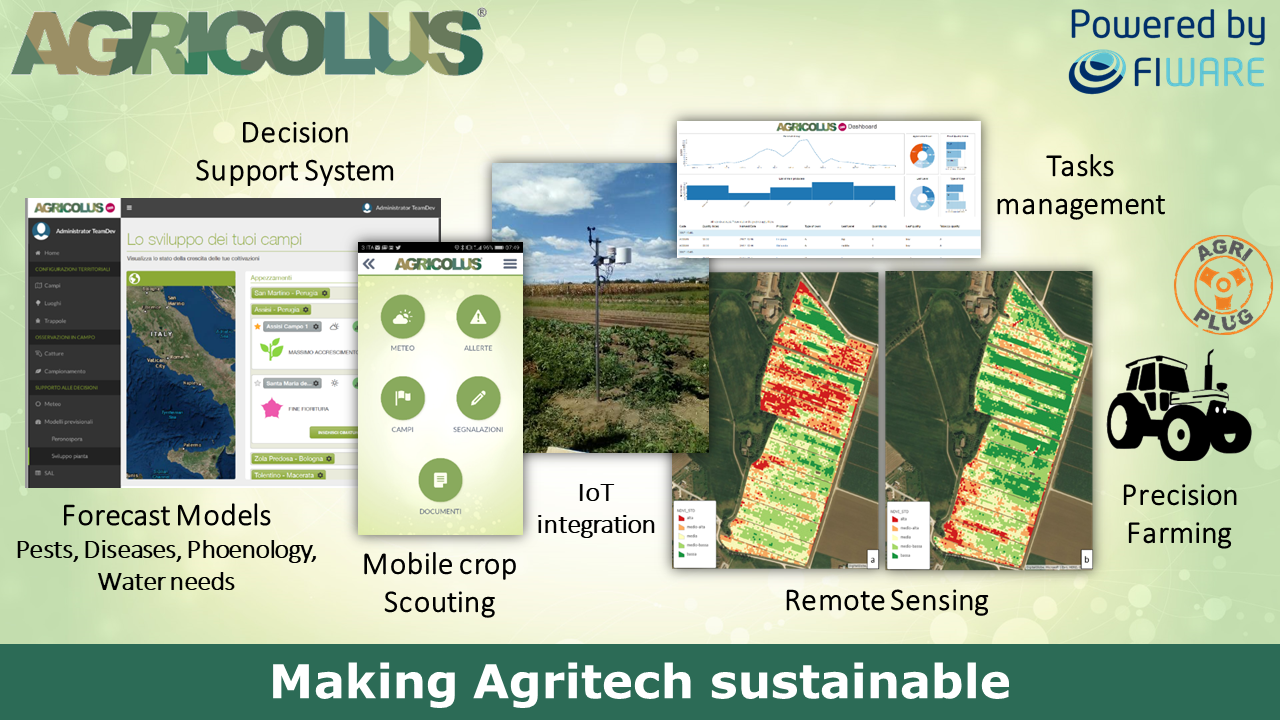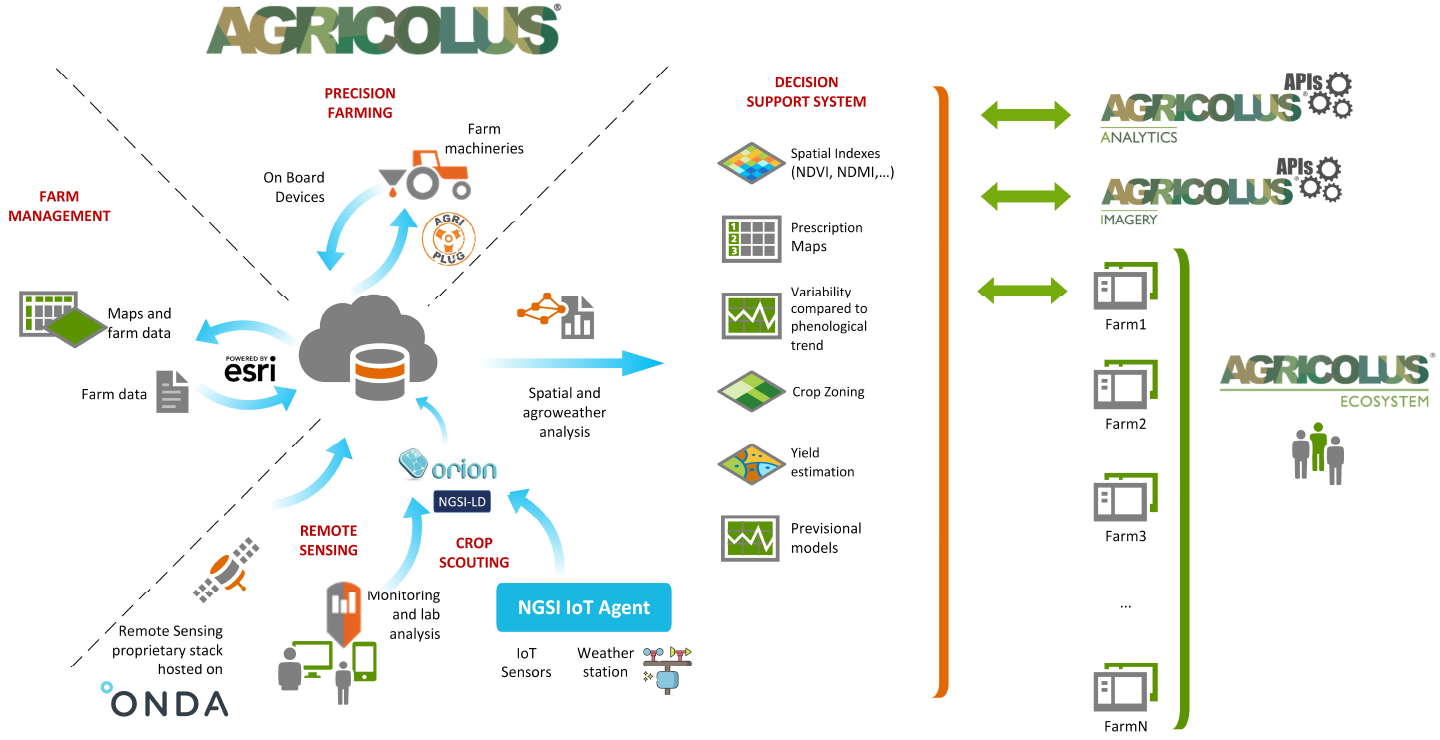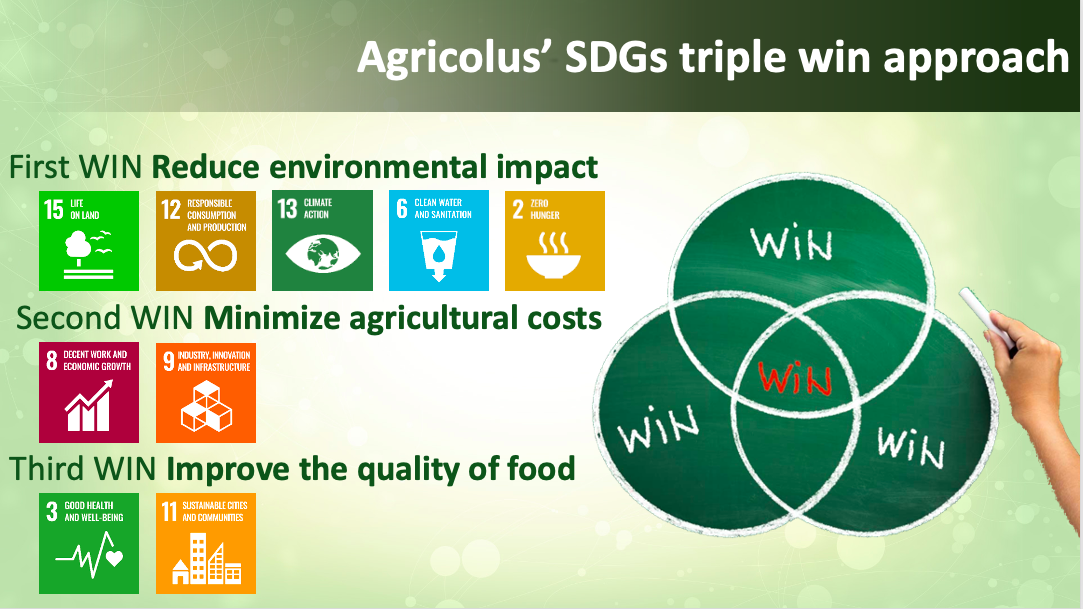Challenge & Context
Farmers are witnessing one of the most anomalous climate trends in recent years. Weather conditions have always influenced crop performance, determining the success or failure of each year’s results.
With the alternation of rain, frost and drought, it is now essential to predict the behaviour of crops and to act promptly in order to avoid possible damage.
The development of both innovative agricultural technologies and concepts such as precision farming, smart farming and sustainable agriculture have led to the development of Decision Support Systems (DSS). The function of DSS is not an easy subject to explore, but of extreme importance. One of the key factors for the proper management of a farm is the decisions to be taken to respond to any emergencies and/or changes in cultivation interventions to be made.
DSS help farmers to make “smart” choices based on the real needs of crops and their relationships with their surrounding environment, with the aim of limiting the use of resources such as water, treatments and fertilizers.
This means that technological evolution and innovation in cultivation practices are no longer an option, but a necessity that allows farms to be competitive and improve themselves, instead of passively suffering adversities.
More specifically, the challenges facing farmers today are:
- pests and diseases;
- climate change;
- cost of production;
- driving improvement year by year;
- saving inputs and resources (e.g. water).
The specific technical tools that help to address these challenges are:
- forecast models;
- machine learning;
- precision farming;
- satellite imaging;
- field mapping;
- crop scouting;
- task management.
Farmers facing the challenges described above will therefore need a system that provides fast and secure information (thanks to quality control on input data) and indicates the effectiveness and efficiency of an ongoing action.
In this context, Italy-based company Agricolus® develops solutions for Smart Agriculture. Their mission is to optimize agronomic practices by supporting farms and agricultural operators with simple and easy-to-use Agri Tech tools, Their mission is to optimise agronomic practices by supporting farms and agricultural operators with simple and easy-to-use Agri Tech tools that are used for data collection and analysis. The core of the company is a platform composed of Smart Farming applications: DSS, forecast models, smart pest and disease control, and remote sensing.
Solution
The core of the company is a platform composed of Smart Farming applications DSS, forecast models, smart pest and disease control, and remote sensing, based on FIWARE’s Open Source technology. FIWARE allows data harmonization, standardization of the IoT interface and common data between software modules and systems. The scalability of FIWARE components allows for diverse and more specific challenges to be addressed at the same time.
The Agricolus solution is an example of FIWARE components that are used for water management. The optimization of field irrigation is now critical due to the impact of climate and land use changing patterns. To address this situation, modelling and implementation techniques for precision irrigation have demonstrated the potential for saving large amounts of water. One of the critical aspects of these systems is the integration of remote sensing applications, crop monitoring tools, and water requirement modeling in one single platform.
Thanks to FIWARE Generic Enablers, the Agricolus ecosystem integrates data and information from various sources: modelling, crop data, innovative low-cost sensors, IoT weather data, and remotely sensed indices, combining research outcomes and the most innovative technologies.
The Agricolus water management solution is vertical and uses a subset of these components relying mostly on weather and soil sensors. In this case, the Orion Context Broker Generic Enabler integrates information from services, sensors and other machines, breaking information silos. Data/API access control allows that context data are only accessible to parties with the appropriate access.
Figure 1 . Making AgriTech sustainable
How it works
The Agricolus architecture is based on a microservices infrastructure with components deployed in three different cloud platforms:
- Microsoft® Azure: for business logic, main storage and FIWARE components;
- ESRI® ArcGIS Online: for basemaps and advanced spatial analysis functionalities;
- ONDA Dias: for the dedicated remote sensing stack, able to pre-process and process spatial data coming from satellites such as the Copernicus Sentinel 2.
The component for the interface with IoT data, for the interaction with third-party products and Agricolus API services, is the Orion Context Broker Generic Enabler. The Context Broker enables the communication between different modules and systems, using standard communication channels. In addition, the usage of the NGSI-LD standard APIs enables data sharing. The IDAS IoT Agents enable the connection between weather sensors, both on the field and on the machinery sensors, handling multiple IoT protocols.
To keep a federated authentication and authorization mechanism, Agricolus provides an implementation of the Oath2.0 authentication that can be connected with KeyRock and Wilma Generic Enablers.
Agricolus provides core functionalities of the product line and enables, for third-party use, applicative services with the Agricolus API services to deliver imagery (remote sensing information) and models for pests and disease forecast services, as well as phenological progress and water needs.
Figure 2 . Agricolus Architecture
Benefits & Impact
With the help of FIWARE, Agricolus has been able to monetize and support the digital experience of farmers.
FIWARE Architecture in Smart AgriFood — The New Revolution of Farming
Smart Farming aims to optimise the production in farms in a sustainable way and by using the most modern means, thereby increasing production and delivering the best products in terms of quality, while maximizing the return. It makes use of a wide range of technologies including IoT sensors, wearables, GPS services, UAVs, robots and drones operating in the field which provide real-time data to systems helping to monitor the production line and support decisions. This enables less waste and maximum efficiency in operations. FIWARE, as an Open Source platform, has created a standard way to develop and integrate solutions for Smart AgriFood.
Thanks to Agricolus, precision farming is not only a study able to improve the lives of farmers and entrepreneurs, but also synonymous with progress, sustainability, and respect for mankind and the environment.
Agricolus on a Global Scale
- used in 110 types of crops;
- solution available in 5 different languages;
- 47 countries reached;
- 19 cases of adoption in Italian regions;
- 31 partnership in 4 different continents;
- 5 continents reached.
Wintess
Agrifiliera Pasqualini, an agronomic consultancy company based in Veneto Region (Italy), is one of Agricolus’ customers that have taken advantage of remote sensing tools to increase the quality of the prescriptions by suggesting to farmers the right time and the right place for specific crop operations and techniques.
Agrifiliera Pasqualini gave advice to a 3000 hectares farm based in Lazio Region (Italy) that cultivates mainly corn, wheat and protein crops. Thanks to Agricolus, technicians of Agrifiliera Pasqualini identified a spread of rust in the wheat field of 100 ha. Wheat rust is a common disease that may cause yield losses up to 50%. The detection of early symptoms of the pathogen is crucial for an appropriate defense, but it is not easy (especially in large fields) because at this stage the symptoms are not clearly visible.
The identification was made by Agrifiliera thanks to a sudden drop of the Leaf Area Index (LAI) calculated from satellite. Additionally, the chlorophyll index highlighted some problems in that area. They went to that specific zone to verify the causes of this anomaly of the satellite indices values. This made it possible to identify the problem. The Agricolus platform was hereby able to provide valuable information on crop health and development which would otherwise,due to field size, have remained unknown.
Agrifiliera’s level of consultancy has increased because “The techniques applied with satellite monitoring are more reliable thanks to the top view of the field that changes the usual perception and allows you to see all the critical points”.
Agricolus is also aiming to address the Sustainable Development Goals promoted by the United Nations.
Figure 3 . Agricolus’ SDGs triple win approach
Added value through FIWARE
Since 2016, Agricolus has been perceived as an answer to requests from the AgriFood sector for reliable, robust and complete solutions. FIWARE is able to connect different components and use the same data standards. End users of the growing FIWARE ecosystem are hereby guaranteed that they can explore hundreds of solutions, while maintaining ownership of their data, as well as keeping their business plan.
FIWARE Foundation’s Smart AgriFood Mission Support Committee and the connected community are continuously growing and striving for innovation. The FIWARE Community is one of the more promising ecosystems currently available, with the potential of connecting big tech players and AgriFood stakeholders in a transparent and open approach.
Next Steps
The FIWARE AgriFood ecosystem is growing at a fast pace and several companies are working together to support the integrations of FIWARE components and FIWARE Open Source approach that will ease the engagement of more actors in this ecosystem.
Andrea Cruciani, the author of this Impact Story, CEO of Agricolus and the Chairman of the Smart AgriFood Support Committee, works actively within the FIWARE Community in order to encourage the adoption of ready-to-use FIWARE-based solutions. Updated information about these developments will be published in the upcoming months.
References
- D. Guidotti, S. Marchi, S. Antognelli and A. Cruciani
Water Management: Agricolus tools integration
2019 Global IoT Summit (GIoTS), Aarhus, Denmark, 2019 - M. Angeles R.L. Cuenca, A. Ortiz
FIWARE Open Source Standard Platform in Smart Farming — A Review
PRO-VE 2018: Collaborative Networks of Cognitive Systems, IFIPAICT - Maselyne, Jarissa & Mertens, Kristof & Van Nuffel, Annelies & Scholten, Huub & Athanasiadis, Ioannis & Larrañaga, Mikel & Fernandez, Izaskun
IoF2020-the Internet Of Meat: towards applications of Internet of Things in the meat supply chain
8th European Conference on Precision Livestock Farming 2017 - FIWARE System of System for the beef supply chain
- FIWARE for Digital Twins in Farm Management




